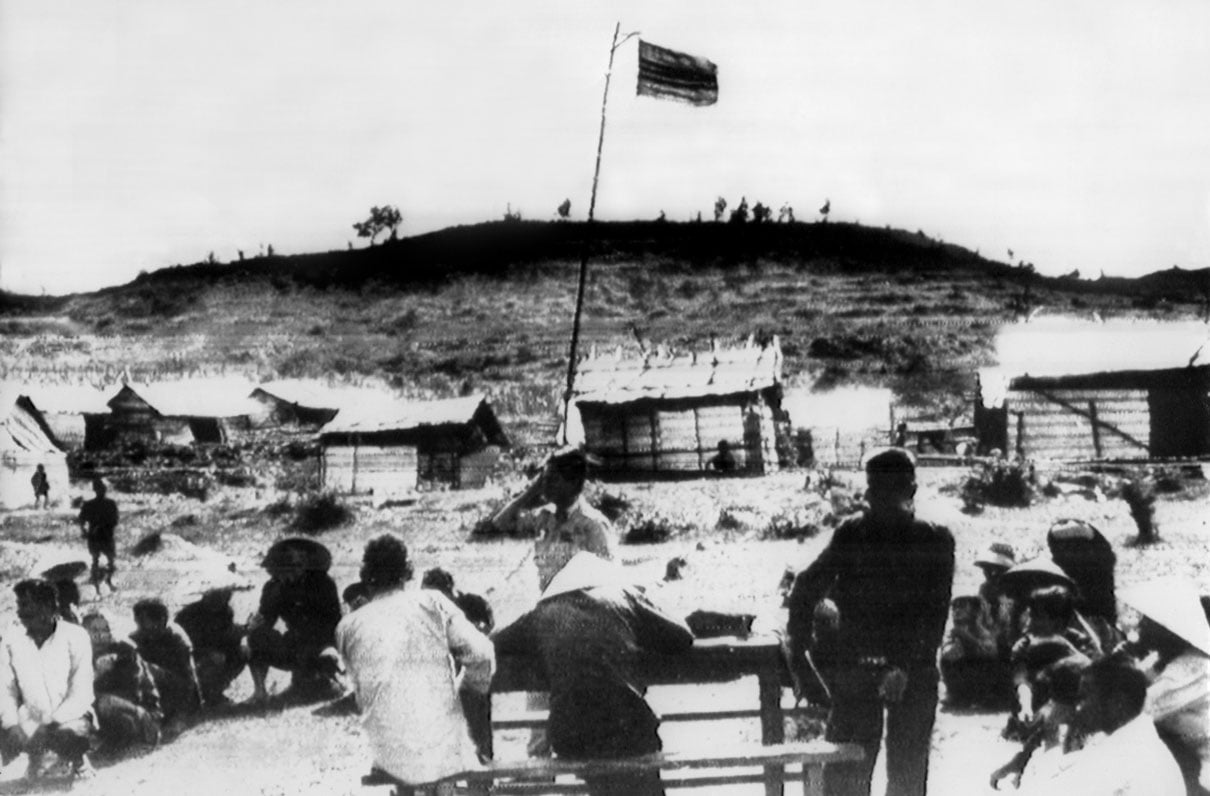By Fred L. Borch
On March 16, 1968, U.S. Army Lt. William L. “Rusty” Calley and his platoon murdered more than 300 Vietnamese civilians at the small hamlet of My Lai. When the incident was uncovered a year later, it shocked the Army and the American people. Four officers and two enlisted soldiers ultimately would be prosecuted for war crimes committed at My Lai. Only one - Calley - would be convicted.
As we pass the half-century mark since the incident at My Lai (often called the “My Lai Massacre”), we look back at the event.
What happened that day?
Early in the morning March 16, 1968, Calley and his platoon were airlifted by helicopter to My Lai, a small hamlet in Quang Ngai province. They believed their platoon - part of the 23rd “Americal” Division - was about to take offensive action against the 48th Viet Cong Battalion.
Imagine the surprise of Calley and his men when, despite expecting heavy resistance, they entered My Lai without receiving any fire. There were no Viet Cong. The only people Calley's platoon encountered were unarmed, unresisting, frightened old men, women, children, and babies.
Calley and his men were not sure what to do in the absence of any enemy, much less any resistance to their entry into My Lai. Yet, platoon members shot some villagers when they first entered the sub-hamlet. Eventually, the Americans herded the villagers into several locations.
A few hours later, Calley approached another soldier, who was watching the Vietnamese. After Calley told him to kill the civilians, both men opened fire with their M16 rifles. By 11 a.m., Calley and his platoon had killed at least 300 civilians (and perhaps as many as 500).
Who was responsible?
The war crime remained hidden until April 1969, when former soldier Ronald L. Ridenhour wrote letters to the White House and others describing the murders.
Ultimately, an investigation resulted not only in charges against those officers and enlisted men who had been present in My Lai but also against officers who participated in the cover-up of the war crimes. Those court-martialed were Calley and Capt. Ernest Medina (his company commander), Col. Oran Henderson (his brigade commander), Capt. Eugene Kotouc (the battalion intelligence officer), and two sergeants who had shot villagers in My Lai.
All were found not guilty, except for Calley. On March 29, 1971, after trial at Fort Benning, Ga., Calley was convicted of the premeditated murder of 22 infants, children, women, and old men and assault with intent to murder a child. He was sentenced to be dismissed from the Army and confined at hard labor for life. But Calley never spent much time at the Disciplinary Barracks at Fort Leavenworth; he was released from confinement - on parole - in November 1974.
How did it affect the U.S. Army?
First, and perhaps most important, My Lai caused a renewed and intensified focus on ethics and soldiering as a profession. Convinced the main reason for killings at My Lai was poor leadership at all levels, Army leaders developed “Army Values” as the foundation of Army culture. It is no accident the first letters of these values - loyalty, duty, respect, selfless service, honor, integrity, personal courage - spell LDRSHIP.
In terms of war-fighting, My Lai also indicated to Army leaders that, while an attrition strategy against an enemy might still be appropriate, the use of a “body count” as an official metric for success was a mistake, because it might encourage soldiers to use more deadly force than necessary. Today, the Army does not count bodies.
At the operational level, there are no longer free fire zones as sometimes were used in Vietnam. Rather, commanders carefully control the use of force through Rules of Engagement (ROE). For example, soldiers on patrol in Vietnam sometimes shot at a military-age male who ran away from them, assuming he was Viet Cong because he ran away. Today's ROE would prohibit such force because running away is not, by itself, evidence of any hostile intent.
Additionally, to ensure all military operations are conducted in accordance with the Law of Armed Conflict, judge advocates are now organic to the staff of every brigade combat team. These Army lawyers go with the brigade when it deploys and provide advice in planning and execution of operations.
Though My Lai was a horrific event in Army history, it had some positive results: a more professional Army with strong values and better leadership. Just as important, while there have been war crimes since My Lai, none have been on the scale of what Calley and his platoon did 50 years ago.
